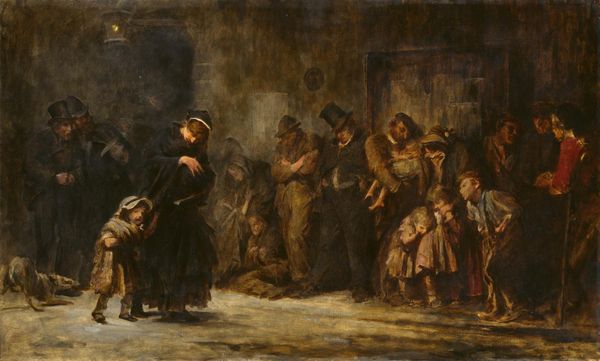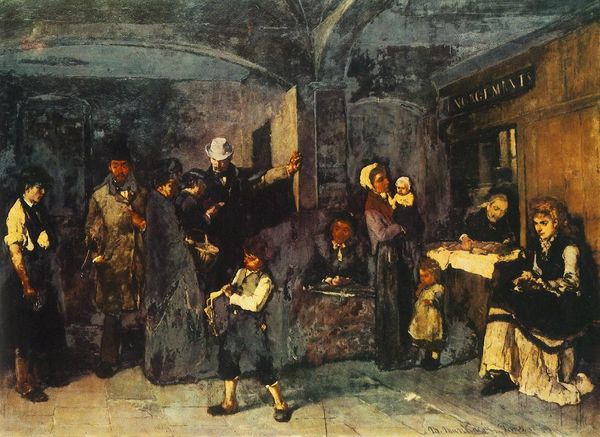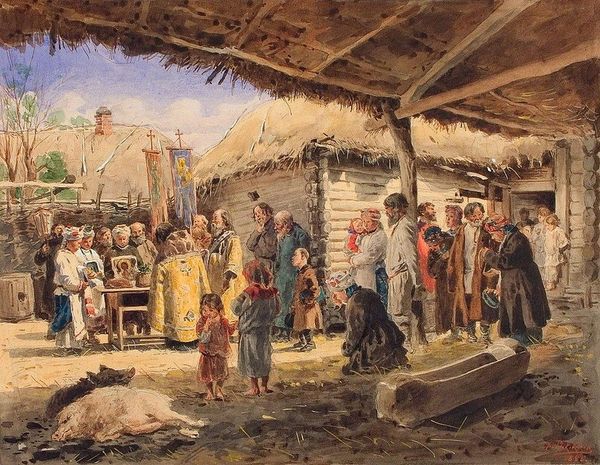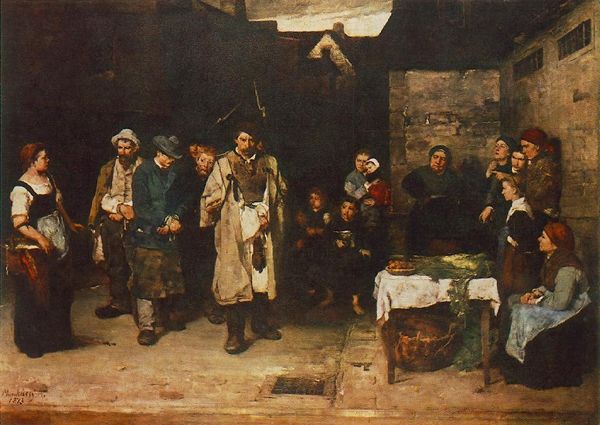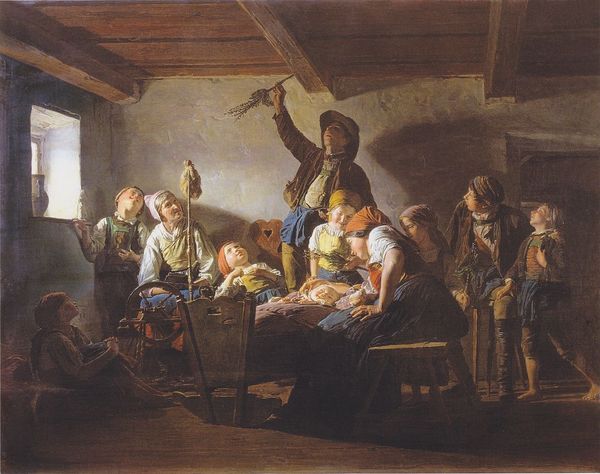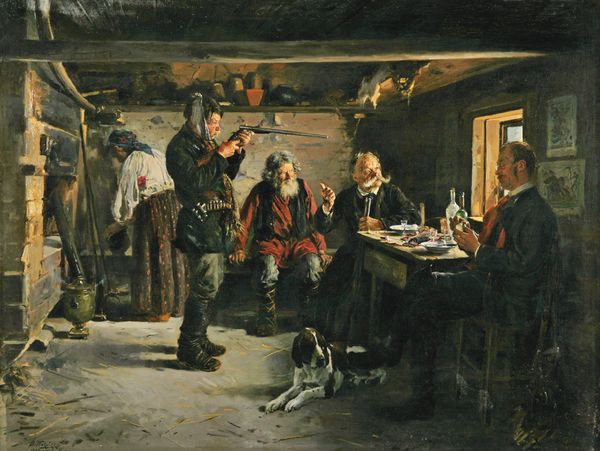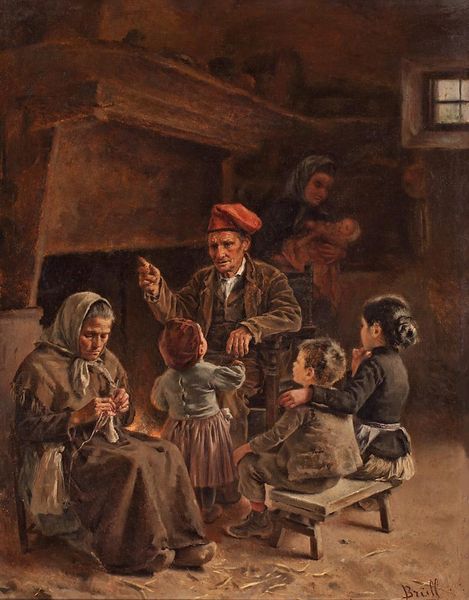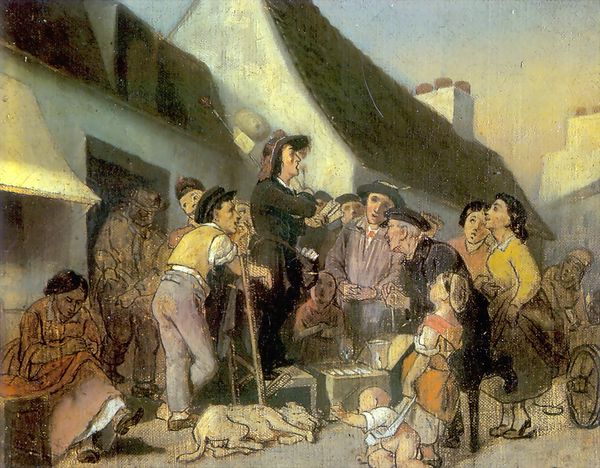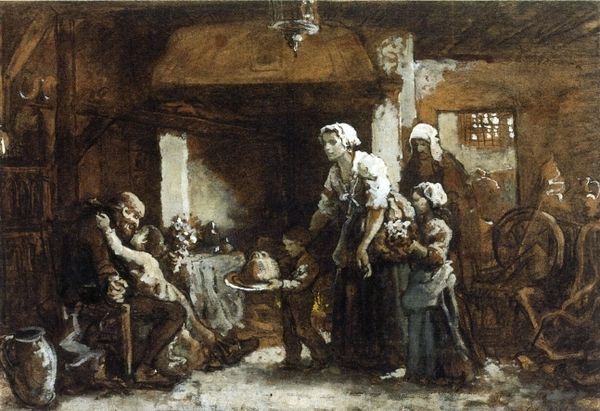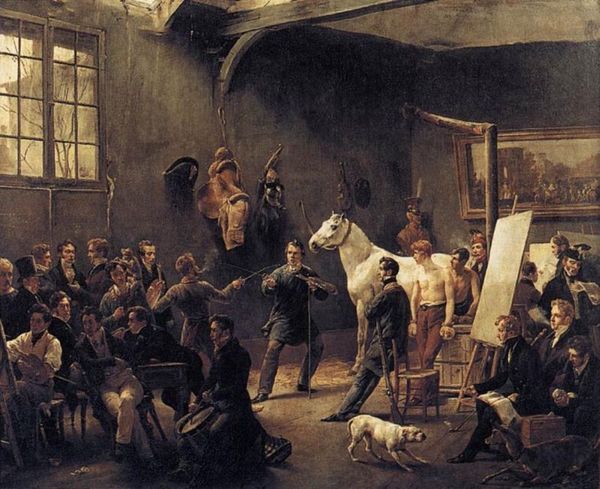
Copyright: Public domain
Editor: Here we have Albrecht Anker's 1893 painting, "The Soup of the Poor", crafted with oil paint, of course. Looking at this, I immediately feel this overwhelming sense of community, a quiet moment captured in what must've been a daily struggle. I am wondering how you would you interpret this depiction, this soup kitchen scene? Curator: Albrecht Anker. Ah, what a wonderfully subtle chronicler of 19th-century life he was. Forget grand pronouncements. He preferred the intimate murmur. Notice how the light bathes the scene, not gloriously, but with a soft, forgiving glow. Makes you almost feel the warmth emanating from that soup pot, doesn’t it? It's not just poverty; it's the resilience *within* poverty. You see how each face, worn as they may be, carries a story? I wonder, looking at their faces, what tales they might tell. Do you feel as though this tells a broader story about compassion and society during that time, even now? Editor: Absolutely, especially that shared, simple meal. I'm just curious about that table. It’s almost set like a makeshift gathering. Curator: Exactly. It elevates it from a mere transaction – food given, gratitude received – to a communal experience. Think about it: breaking bread, even watery soup, creates bonds. It reminds us of our shared humanity. It is almost reminiscent of a makeshift family, of human warmth. But tell me, what about the children? What story are they saying in this? Editor: It feels hopeful somehow, they are at peace despite the reality of their lives at the time. The painting portrays this sense of perseverance to stay alive, doesn't it? Curator: Beautifully said. And perhaps that’s Anker's most enduring message: even in hardship, there's always hope, shared grace and a little bit of humanity, stirred into the soup.
Comments
No comments
Be the first to comment and join the conversation on the ultimate creative platform.
